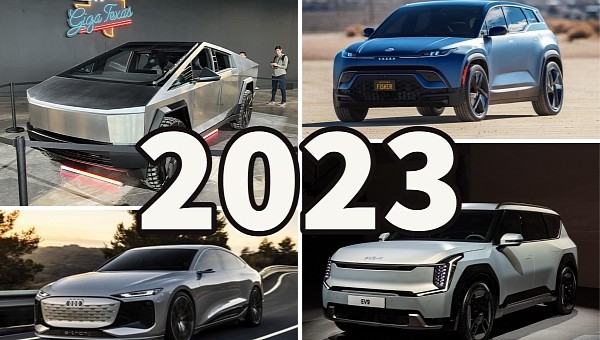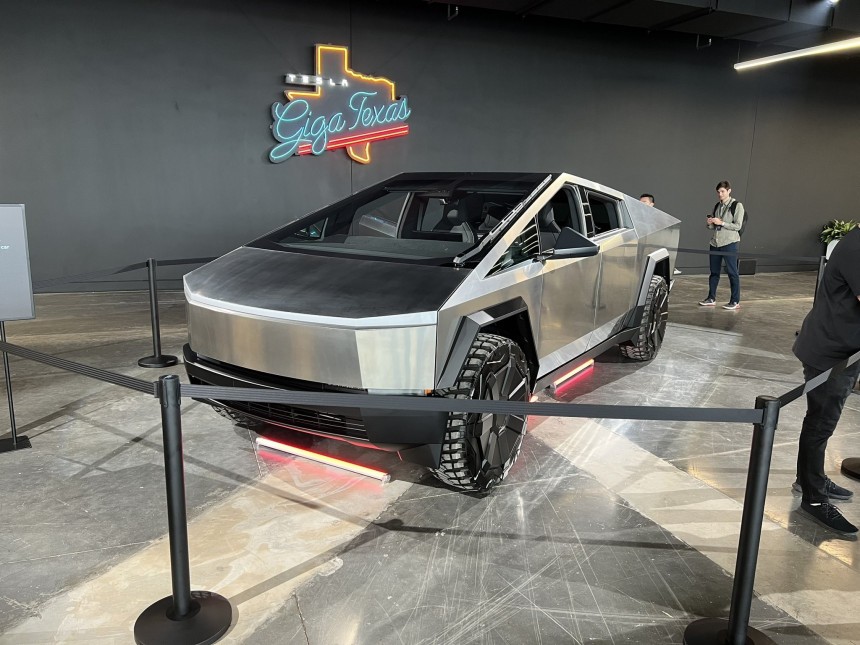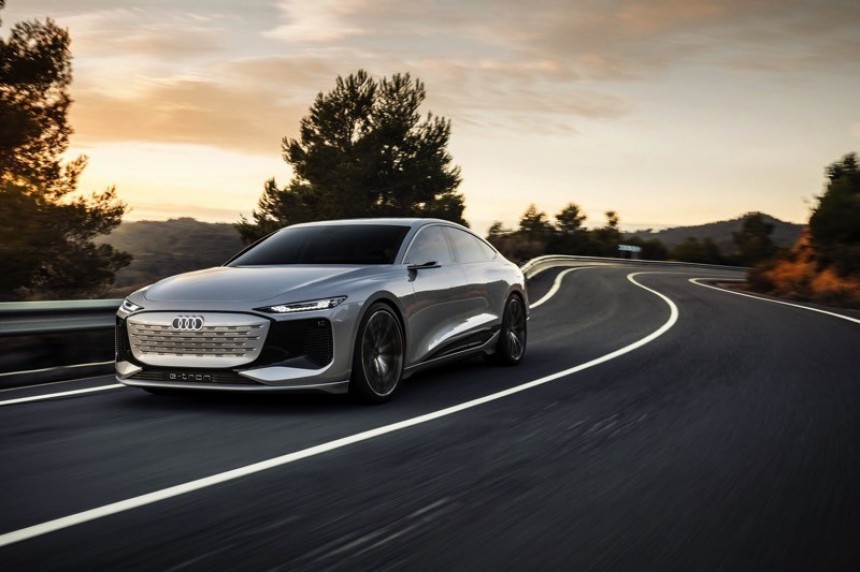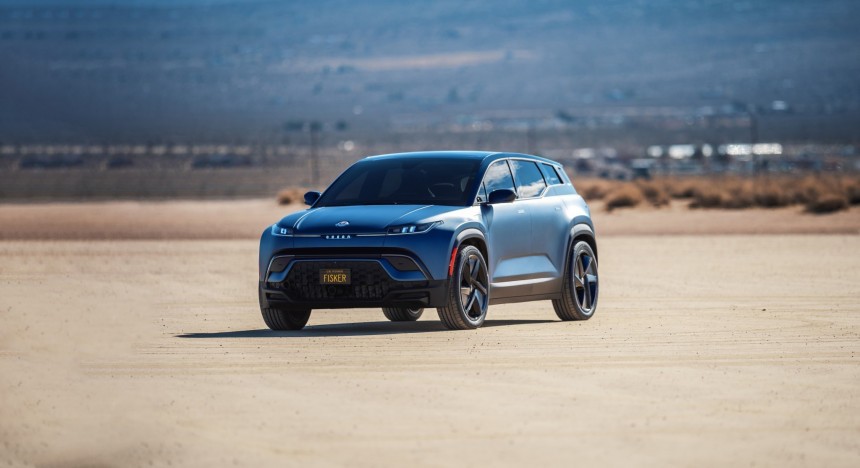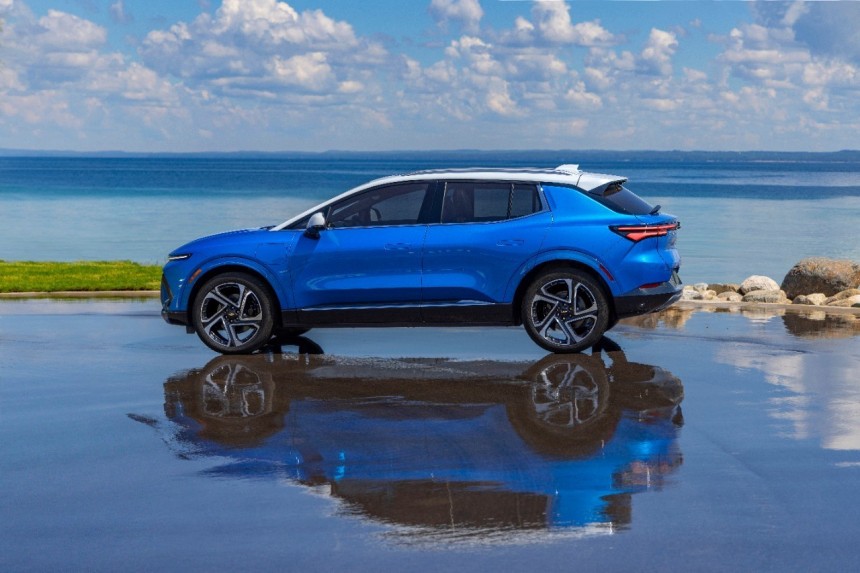With dozens of new models launched, traditional carmakers are expected to significantly step up their EV game in 2023. Tesla will have a tough year defending its dominant position, while new companies will try to prove they deserve a place at the big boys' table.
Last year, electric vehicles became more widespread, with many models launched by traditional carmakers and startups. EVs have made inroads, while the sales of ICE vehicles have stalled in all major markets, including the U.S. Tesla is still the dominant player by far, but others have started eating into its EV market share. The same is true for Tesla, though, as it prepares to sell around two million EVs this year, surpassing all but the biggest legacy carmakers. Let's see the trends and models that will shape the EV landscape in 2023.
The price war Tesla started has already made victims among startups, with legacy carmakers also feeling the heat. It also helped Tesla reverse the sales decline. With a fat profit margin on every EV it sells, Tesla certainly affords to play with prices to squeeze other players. No carmaker is currently making a profit from its EV business, and it would be interesting to see for how long they could afford to bleed money.
Tesla will surely bring more price cuts if it has to, as it builds new gigafactories and expands production capacity at its existing facilities. The recently announced Giga Mexico will debut a unique manufacturing process allowing Tesla to cut costs in half compared to Model 3/Y production. This will probably become obvious only next year, but Tesla has another ace up its sleeve for 2023.
This should be the year when the first units of the Cybertruck should get to customers. The Tesla Cybertruck is the most anticipated EV model of the past years. While many dismissed it as a bizarrely-shaped truck, let's not forget that the iPhone was also laughed at by Microsoft's Steve Balmer when Windows Mobile dominated the PDA market. However famous the Cybertruck may be, it will not be the dominant EV any time soon, so we'll probably only see what it's capable of a couple of years from now.
Volkswagen has hit a wall with software development, and this has affected its entire EV program. The Porsche Macan EV and the Audi Q6 e-tron are still missing from the market despite prototype testing being completed years ago. However, Audi has not given up and just announced a completely revamped EV lineup. Leading the charge is the Audi A6 e-tron, sharing the same PPE architecture with the Macan and Q6 e-tron.
The Audi's family EV will duel with the upcoming BMW i5 for a place in the hearts of German car fans. The electric 5 Series sedan should land this October in showrooms and will be followed next year by a station Wagon. Mercedes-Benz launched the EQE in the same segment last year, but it failed to impress buyers, despite being cheaper than the Tesla Model S, its nemesis in the E segment.
Volkswagen brand is playing a different game with its MEB platform, recently refreshed for another lease of life. The MEB was supposed to be a stop-gap architecture under Herbert Diess, but it has become the last-resort solution to advance electrification plans at Volkswagen. The popular brand is preparing to enrich the ID. range at the top, with ID.7, and at the bottom, with the ID.2, although only the former will launch in 2023. Except for the design and the body style, there aren't many technical differences from the existing ID.3/ID.4 mainstream models.
According to a recent analysis by Automotive News, Canoo and Faraday Future are in the most precarious position, with Aptera, Nikola, and Lordstown not far behind. Faraday Future was planning to start deliveries of the FF91 Futurist in April and is still confident it can do that. Still, the company has less than a month's worth of cash to cover operating expenses. Fisker is better positioned to start Ocean deliveries, although the company had to cut back on features to meet the deadline.
Things are much better for startups like Rivian and Lucid, which already have products on the market. Both are in a tight corner, especially since Tesla lowered its prices in January. Rivian is in the middle of a massive production ramp-up, although burning money at an alarming rate. Lucid could be in an even more precarious situation had it not been owned by Saudi Arabia's Public Investment Fund (PIF). We think both would be fine in the long term, as they have the best prospects of surviving, either alone or incorporated by another car company.
Hyundai is expected to launch two new models this year, with Ioniq 6 getting to customers this summer and the Kona EV later this year. While the former will top Hyundai's EV offering until Ioniq 7 arrives next year, the Kona EV will be an affordable electric vehicle at the bottom. Kia recently showed the first pictures of the EV9 and intends to start sales later this year. The EV9 might be the most daring electric vehicle the Korean car industry has designed, bringing most of the concept's characteristics into production.
For 2023, GM plans to launch the SUV version of the Hummer, along with a slew of affordable EVs like the Chevrolet Blazer EV and the Equinox EV. The latter is expected to retail for as low as $30,000, and Mary Barra thinks this is a strong advantage, although Bolt EV hasn't proved that affordable means successful. Despite being priced at less than $25,000 when factoring in the IRA tax credits, the Bolt convinced less than 50,000 customers in 2022.
The most anticipated launch of the year is the Chevrolet Silverado EV, GM's attempt to conquer a slice of the lucrative full-size pickup truck market. Currently, the market leaders are Ford, with the F-150 Lightning, and Rivian, with the R1T, but Tesla Cybertruck is also in the starting block. The problem with GM's plan is that everything hangs on the Ultium platform and batteries becoming ubiquitous. Currently, it doesn't look like GM can produce them in significant numbers, which means all those new EVs will not make a difference.
Another exciting launch expected this year is the Polestar 3, which precedes the technically similar Volvo EX90. The Swedish (or Chinese?) crossover will be the brand's first model built in the U.S. at Volvo's South Carolina production facility. Given the right price, Polestar 3 should prove to be one of the disruptors of the EV market in the coming years.
The Japanese carmakers are the missing piece of the puzzle in this story. Toyota is working on its next-gen EV platform and is preparing to launch the Lexus RZ in the U.S. as the luxury version of the bZ4X. We don't expect to have more success than its brother. At the same time, Honda has partnered with GM to offer Ultium-based crossovers, including the Prologue EV planned for next year. As GM's program doesn't look good, Honda will also suffer.
Tesla's long game and the Cybertruck
One of the more interesting trends in the 2022 EV market was the peak of Tesla sales toward the end of last year. The American EV maker has always claimed that it doesn't have a demand problem, but a different picture emerged as the sales started to dwindle. Elon Musk has boasted about the demand for Tesla cars being "infinite," although he admitted that not everyone could afford the price. This was right after Tesla caused a big turmoil in the market by slashing prices across the board by more than 20 percent.The price war Tesla started has already made victims among startups, with legacy carmakers also feeling the heat. It also helped Tesla reverse the sales decline. With a fat profit margin on every EV it sells, Tesla certainly affords to play with prices to squeeze other players. No carmaker is currently making a profit from its EV business, and it would be interesting to see for how long they could afford to bleed money.
This should be the year when the first units of the Cybertruck should get to customers. The Tesla Cybertruck is the most anticipated EV model of the past years. While many dismissed it as a bizarrely-shaped truck, let's not forget that the iPhone was also laughed at by Microsoft's Steve Balmer when Windows Mobile dominated the PDA market. However famous the Cybertruck may be, it will not be the dominant EV any time soon, so we'll probably only see what it's capable of a couple of years from now.
German car industry's puzzling strategy
The EV market is hot in 2023 with plenty of launches, but the most important trend is legacy carmakers finally becoming serious about going electric. Not all and not all-in, as shown by the German car industry. Volkswagen Group is announcing many new models from Volkswagen, Audi, and Porsche brands while simultaneously fighting an ICE ban in Europe from 2035. This is a move we've seen Toyota trying in the past, with little success, as it seems.Volkswagen has hit a wall with software development, and this has affected its entire EV program. The Porsche Macan EV and the Audi Q6 e-tron are still missing from the market despite prototype testing being completed years ago. However, Audi has not given up and just announced a completely revamped EV lineup. Leading the charge is the Audi A6 e-tron, sharing the same PPE architecture with the Macan and Q6 e-tron.
Volkswagen brand is playing a different game with its MEB platform, recently refreshed for another lease of life. The MEB was supposed to be a stop-gap architecture under Herbert Diess, but it has become the last-resort solution to advance electrification plans at Volkswagen. The popular brand is preparing to enrich the ID. range at the top, with ID.7, and at the bottom, with the ID.2, although only the former will launch in 2023. Except for the design and the body style, there aren't many technical differences from the existing ID.3/ID.4 mainstream models.
EV startups will have a rough ride in 2023
The year should prove unforgiving for most EV startups. The economic conditions are worsening, making raising new capital much harder than before. Many startups are still far from becoming profitable and will not be so for a long time as they lack volumes to enable economies of scale. To make matters worse, many startups have reached the bottom of their cash reserves, so we might witness more companies kicking the bucket this year.According to a recent analysis by Automotive News, Canoo and Faraday Future are in the most precarious position, with Aptera, Nikola, and Lordstown not far behind. Faraday Future was planning to start deliveries of the FF91 Futurist in April and is still confident it can do that. Still, the company has less than a month's worth of cash to cover operating expenses. Fisker is better positioned to start Ocean deliveries, although the company had to cut back on features to meet the deadline.
The Korean connection
The Korean carmakers Hyundai and Kia have showed they are resilient, and their EV programs would likely help them stay in the game despite current hurdles. Being excluded from the IRA incentives in the U.S. is a huge setback, making all their award-winning EVs mostly unattractive to buyers. The Koreans have a tough choice to make: sell almost no EVs in the U.S. until they start producing them in the country, or sell them at a loss to keep the customers from defecting to other brands. Maybe a little bit of both.Hyundai is expected to launch two new models this year, with Ioniq 6 getting to customers this summer and the Kona EV later this year. While the former will top Hyundai's EV offering until Ioniq 7 arrives next year, the Kona EV will be an affordable electric vehicle at the bottom. Kia recently showed the first pictures of the EV9 and intends to start sales later this year. The EV9 might be the most daring electric vehicle the Korean car industry has designed, bringing most of the concept's characteristics into production.
GM's ambitious plans and disappointing execution
Judging by the bold statements made by its CEO Mary Barra, General Motors should be the undisputable leader of the EV market. On paper, GM's brands have the production capacity, supply-chain contracts, and money to produce the most electric vehicles. It didn't happen, as the company's Ultium platform is the main bottleneck. GM made ridiculously low numbers of Ultium vehicles, with the GMC Hummer EV and Cadillac Lyriq at less than 1,000 units combined in 2022.The most anticipated launch of the year is the Chevrolet Silverado EV, GM's attempt to conquer a slice of the lucrative full-size pickup truck market. Currently, the market leaders are Ford, with the F-150 Lightning, and Rivian, with the R1T, but Tesla Cybertruck is also in the starting block. The problem with GM's plan is that everything hangs on the Ultium platform and batteries becoming ubiquitous. Currently, it doesn't look like GM can produce them in significant numbers, which means all those new EVs will not make a difference.
What else?
Ford fares much better than GM in this regard and is closely tied to Volkswagen in more ways than we'd imagined. Ford is preparing to announce its MEB-based "Medium-Size Crossover" on March 21, and we think it will be a successful model, especially in Europe. There's little information about it, although we expect it not to be much different from the Volkswagen ID.4. Design-wise, the new electric crossover will be a mini-Explorer.Another exciting launch expected this year is the Polestar 3, which precedes the technically similar Volvo EX90. The Swedish (or Chinese?) crossover will be the brand's first model built in the U.S. at Volvo's South Carolina production facility. Given the right price, Polestar 3 should prove to be one of the disruptors of the EV market in the coming years.
The Japanese carmakers are the missing piece of the puzzle in this story. Toyota is working on its next-gen EV platform and is preparing to launch the Lexus RZ in the U.S. as the luxury version of the bZ4X. We don't expect to have more success than its brother. At the same time, Honda has partnered with GM to offer Ultium-based crossovers, including the Prologue EV planned for next year. As GM's program doesn't look good, Honda will also suffer.
